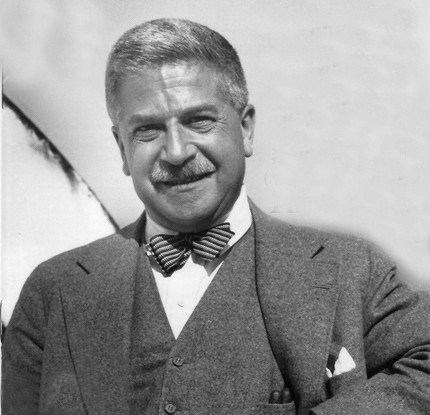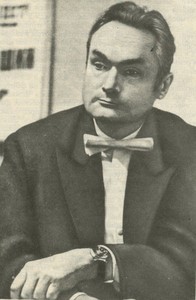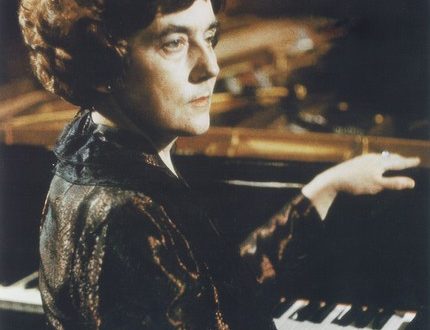
Artur Schnabel |
Arthur Schnabel

Our century marked the greatest milestone in the history of the performing arts: the invention of sound recording radically changed the idea of performers, making it possible to “reify” and forever imprint any interpretation, making it the property of not only contemporaries, but also future generations. But at the same time, sound recording made it possible to feel with renewed vigor and clarity how exactly performance, interpretation, as a form of artistic creativity, is subject to time: what once seemed like a revelation, as the years go by inexorably grows old; what caused delight, sometimes leaves only bewilderment. This happens often, but there are exceptions – artists whose art is so strong and perfect that it is not subject to “corrosion”. Artur Schnabel was such an artist. His playing, preserved in recordings on records, leaves today almost as strong and deep an impression as in those years when he performed on the concert stage.
- Piano music in the online store OZON.ru
For many decades, Arthur Schnabel remained a kind of standard – a standard of nobility and classical purity of style, content and high spirituality of performance, especially when it came to interpreting the music of Beethoven and Schubert; however, in the interpretation of Mozart or Brahms, few could compare with him.
To those who knew him only from notes – and these are, of course, the majority today – Schnabel seemed to be a monumental, titanic figure. Meanwhile, in real life he was a short man with the same cigar in his mouth, and only his head and hands were disproportionately large. In general, he did not at all fit the ingrained idea of uXNUMXbuXNUMXbthe “pop star”: nothing external in the manner of playing, no unnecessary movements, gestures, poses. And yet, when he sat down at the instrument and took the first chords, a hidden silence was established in the hall. His figure and his game radiated that unique, special charm that made him a legendary personality during his lifetime. This legendaryness is still supported by “material evidence” in the form of many records, it is captured truthfully in his memoirs “My Life and Music”; his halo continues to be supported by dozens of students who still occupy leading positions on the horizon of world pianism. Yes, in many respects Schnabel can be considered the creator of a new, modern pianism – not only because he created a wonderful pianistic school, but also because his art, like the art of Rachmaninoff, was ahead of its time …
Schnabel, as it were, absorbed, synthesized and developed in his art the best features of XNUMXth-century pianism – heroic monumentality, breadth of scope – features that bring him closer to the best representatives of the Russian pianistic tradition. It should not be forgotten that before entering the class of T. Leshetitsky in Vienna, he studied for a long time under the guidance of his wife, the outstanding Russian pianist A. Esipova. In their house, he saw many great musicians, including Anton Rubinstein, Brahms. By the age of twelve, the boy was already a complete artist, in whose game attention was drawn primarily to intellectual depth, so unusual for a young child prodigy. Suffice it to say that his repertoire included sonatas by Schubert and compositions by Brahms, which even experienced artists rarely dare to play. The phrase Leshetitsky said to the young Schnabel also entered the legend: “You will never be a pianist. Are you a musician!”. Indeed, Schnabel did not become a “virtuoso”, but his talent as a musician was revealed to the full extent of names, but in the field of pianoforte.
Schnabel made his debut in 1893, graduated from the conservatory in 1897, when his name was already widely known. His formation was greatly facilitated by his passion for chamber music. At the turn of the 1919th century, he founded the Schnabel Trio, which also included violinist A. Wittenberg and cellist A. Hecking; later he played a lot with the violinist K. Flesch; among his partners was the singer Teresa Behr, who became the musician’s wife. At the same time, Schnabel gained authority as a teacher; in 1925 he was awarded the title of honorary professor at the Berlin Conservatory, and from 20 he taught the piano class at the Berlin Higher School of Music. But at the same time, for a number of years, Schnabel did not have much success as a soloist. Back in the early 1927s, he sometimes had to perform in half-empty halls in Europe, and even more so in America; apparently, the time for a worthy assessment of the artist did not come then. But gradually his fame begins to grow. In 100, he marked the 32th anniversary of the death of his idol, Beethoven, for the first time performing all of his 1928 sonatas in one cycle, and a few years later he was the first in history to record them all on records – at that time, an unprecedented work that required four years! In 100, on the 1924th anniversary of Schubert’s death, he played a cycle that included almost all of his piano compositions. After that, finally, universal recognition came to him. This artist was especially highly valued in our country (where from 1935 to XNUMX he repeatedly gave concerts with great success), because Soviet music lovers always put in the first place and valued above all the richness of art. He also loved to perform in the USSR, noting the “great musical culture and love of the broad masses for music” in our country.
After the Nazis came to power, Schnabel finally left Germany, lived for some time in Italy, then in London, and soon moved to the United States at the invitation of S. Koussevitzky, where he quickly gained universal love. There he lived until the end of his days. The musician died unexpectedly, on the eve of the start of another big concert tour.
Schnabel’s repertoire was great, but not unlimited. The students recalled that in the lessons their mentor played by heart almost all piano literature, and in his early years in his programs one could meet the names of romantics – Liszt, Chopin, Schumann. But having reached maturity, Schnabel deliberately limited himself and brought to the audience only what was especially close to him – Beethoven, Mozart, Schubert, Brahms. He himself motivated this without coquetry: “I considered it an honor to confine myself to a high-mountainous region, where more and more new ones open again behind each peak taken.”
Schnabel’s fame was great. But still, the zealots of piano virtuosity were not always able to accept the artist’s success and come to terms with it. They noted, not without malice, every “stroke”, every visible effort, applied by them to overcome the difficulties raised by the Appassionata, concertos or Beethoven’s late sonatas. He was also accused of excessive prudence, dryness. Yes, he never possessed the phenomenal data of Backhouse or Levin, but no technical challenges were insurmountable for him. “It is absolutely certain that Schnabel never mastered the virtuoso technique. He never wanted to have her; he did not need it, because in his best years there was little that he would like, but could not do, ”wrote A. Chesins. His virtuosity was quite enough for the last of the records, made shortly before his death, in 1950, and depicting his interpretation of Schubert’s impromptu. It was different – Schnabel remained primarily a musician. The main thing in his game was an unmistakable sense of style, philosophical concentration, expressiveness of the phrase, fortitude. It was these qualities that determined his pace, his rhythm – always accurate, but not “metro-rhythmic”, his performing concept as a whole. Chasins continues: “Schnabel’s playing had two main qualities. She was always excellently intelligent and unobtrusively expressive. Schnabel concerts were unlike any other. He made us forget about the performers, about the stage, about the piano. He forced us to give ourselves completely to music, to share his own immersion.
But for all that, in slow parts, in “simple” music, Schnabel was truly unsurpassed: he, like few people, knew how to breathe meaning into a simple melody, to pronounce a phrase with great significance. His words are noteworthy: “Children are allowed to play Mozart, because Mozart has relatively few notes; grown-ups avoid playing Mozart because every note costs too much.”
The impact of Schnabel’s playing was greatly enhanced by his sound. When needed, it was soft, velvety, but if circumstances demanded, a steel shade appeared in it; at the same time, harshness or rudeness was alien to him, and any dynamic gradations were subject to the requirements of music, its meaning, its development.
The German critic H. Weier-Wage writes: “In contrast to the temperamental subjectivism of other great pianists of his time (for example, d’Albert or Pembaur, Ney or Edwin Fischer), his playing always gave the impression of restrained and calm. He never let his feelings escape, his expressiveness remained hidden, sometimes almost cold, and yet was infinitely far from pure “objectivity”. His brilliant technique seemed to foresee the ideals of subsequent generations, but it always remained only a means for solving a high artistic task.
Artur Schnabel’s legacy is varied. He worked a lot and fruitfully as an editor. In 1935, a fundamental work came out of print – an edition of all Beethoven’s sonatas, in which he summarized the experience of several generations of interpreters and outlined his own original views on the interpretation of Beethoven’s music.
Composer’s work occupies a very special place in Schnabel’s biography. This strict “classic” at the piano and a zealot of the classics was a passionate experimenter in his music. His compositions – and among them a piano concerto, a string quartet, a cello sonata and pieces for pianoforte – sometimes amaze with the complexity of the language, unexpected excursions into the atonal realm.
And yet, the main, main value in his legacy is, of course, records. There are many of them: concerts by Beethoven, Brahms, Mozart, sonatas and pieces by their favorite authors, and much more, up to Schubert’s Military Marches, performed in four hands with his son Karl Ulrich Schnabel, Dvorak and Schubert quintets, captured in collaboration with the quartet ” Yro arte”. Assessing the recordings left by the pianist, the American critic D. Harrisoa wrote: “I can hardly restrain myself, listening to talk that Schnabel allegedly suffered from flaws in technique and therefore, as some people say, he felt more comfortable in slow music, than fast. This is simply nonsense, since the pianist was in complete control of his instrument and always, with one or two exceptions, “dealt” with sonatas and concertos as if they were created especially for his fingers. Indeed, disputes about Schnabel technique are sentenced to death, and these records confirm that not a single phrase, large or small, was higher than his virtuoso acumen.
Artur Schnabel’s legacy lives on. Over the years, more and more recordings are being extracted from the archives and made available to a wide circle of music lovers, confirming the scale of the artist’s art.
Lit .: Smirnova I. Arthur Schnabel. – L., 1979





